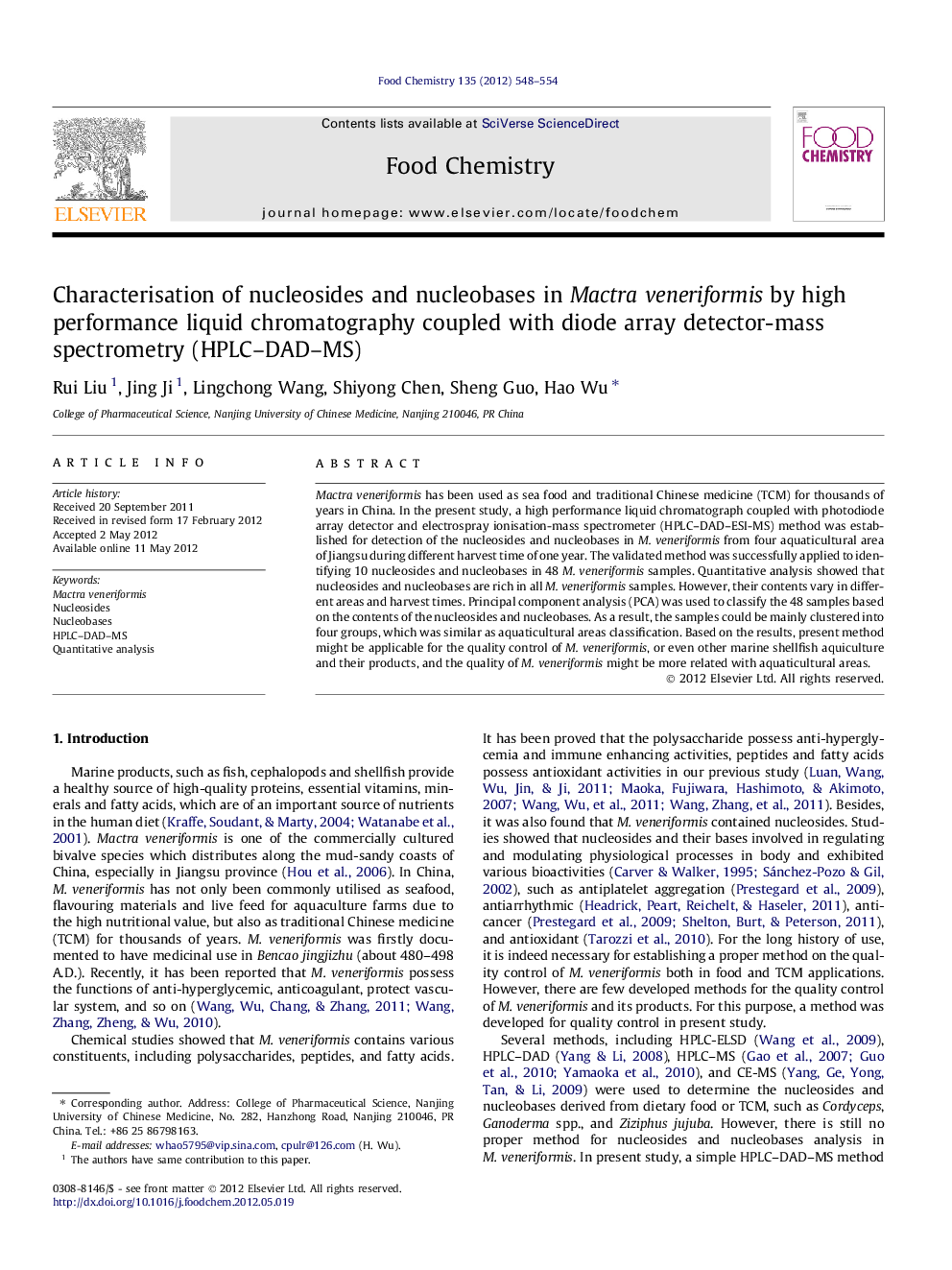| Article ID | Journal | Published Year | Pages | File Type |
|---|---|---|---|---|
| 1185768 | Food Chemistry | 2012 | 7 Pages |
Mactra veneriformis has been used as sea food and traditional Chinese medicine (TCM) for thousands of years in China. In the present study, a high performance liquid chromatograph coupled with photodiode array detector and electrospray ionisation-mass spectrometer (HPLC–DAD–ESI-MS) method was established for detection of the nucleosides and nucleobases in M. veneriformis from four aquaticultural area of Jiangsu during different harvest time of one year. The validated method was successfully applied to identifying 10 nucleosides and nucleobases in 48 M. veneriformis samples. Quantitative analysis showed that nucleosides and nucleobases are rich in all M. veneriformis samples. However, their contents vary in different areas and harvest times. Principal component analysis (PCA) was used to classify the 48 samples based on the contents of the nucleosides and nucleobases. As a result, the samples could be mainly clustered into four groups, which was similar as aquaticultural areas classification. Based on the results, present method might be applicable for the quality control of M. veneriformis, or even other marine shellfish aquiculture and their products, and the quality of M. veneriformis might be more related with aquaticultural areas.
► Nucleosides and nucleobases of Mactra veneriformis were quantified firstly. ► Quality of samples from four cultivate areas in different harvest time was evaluated. ► PCA analysis showed the main influence of M. veneriformis quality is cultivate area.
